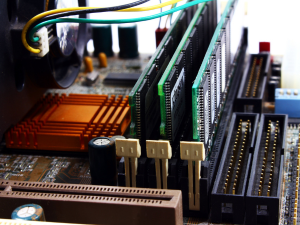"Share this Info and Help a Friend"

AD: We want to be your IT and Technology Provider!
No Contract Prices, IT, Cellphone, TV, VOD, Phone, Internet.
"You have Nothing to Lose But your Higher Bill"
https://www.teqiq.com/
When discussing cybersecurity threats and protecting business data, many business owners instinctively think of software vulnerabilities, email phishing, DDoS attacks, and other software or network-related threats.
However, with the rise of the Internet of Things (IoT), cyber attackers and other bad-faith actors have more attack surfaces to target. Unfortunately, many of these attacks are successful because your firewall or antivirus software doesn’t offer much protection.
Therefore, business owners who are serious about reducing the risk of attacks must address hardware security vulnerabilities alongside software variants.
Below are the most common hardware security vulnerabilities.
Hardware Compromise
One of the simplest and most effective ways for cybercriminals to carry out system exploits is to compromise hardware within a business premises.
It could be as simple as changing the ports on a desktop or connecting bridges on a server. It may also be as complicated as removing and replacing storage systems. Either way, the attack will almost certainly succeed if you don’t notice tampering with your hardware.
The easiest way to deal with a hardware security vulnerability is to inspect your devices and other components visually.
Any signs of damage or unauthorized access, like loose wiring, missing screws, scrapes around screws, partially open covers, etc., should set off your internal alarm bells. Shut down the affected system or device until you can confirm the source of the tampering.
Default Passwords
This is one of the most common hardware vulnerabilities as more businesses adopt IoT measures. Many such devices come with default passwords out of the box, putting them at risk for security.
Manufacturers expect users to change these passwords, but not every business owner follows through. This is especially true for brands heavily reliant on IoT devices. As a result, they add these devices with default passwords — which many cyber attackers already know — to their network.
You can avoid this vulnerability by changing the default password on every device before connecting it to your network.
Hardware With Outdated Firmware
The companies that build hardware systems are only manufacturers. Therefore, it’s not uncommon to find the firmware for the devices riddled with security flaws and bugs.
They roll out patches to fix device vulnerabilities when they become apparent. However, many businesses (including those with dedicated IT departments) are slow to implement the patches. How many times have you updated a smart thermostat or wireless router?
However, if you want to keep out cyber attackers, you must take steps to ensure the firmware in all hardware components is up to date.
Use of Custom Chipsets
Custom chipsets are important in high-end desktops and corporate data centers.
However, they are one of the most common hardware security vulnerabilities because manufacturers don’t spend as much time reviewing their security. Most of them only scramble for a patch after a zero-day exploit.
Business owners must carefully evaluate their use of custom chipsets. Can you trust the chipset manufacturer’s security review? Will they offer regular updates to stay ahead of vulnerabilities?
Asking such questions proactively can go a long way in ensuring network security.



